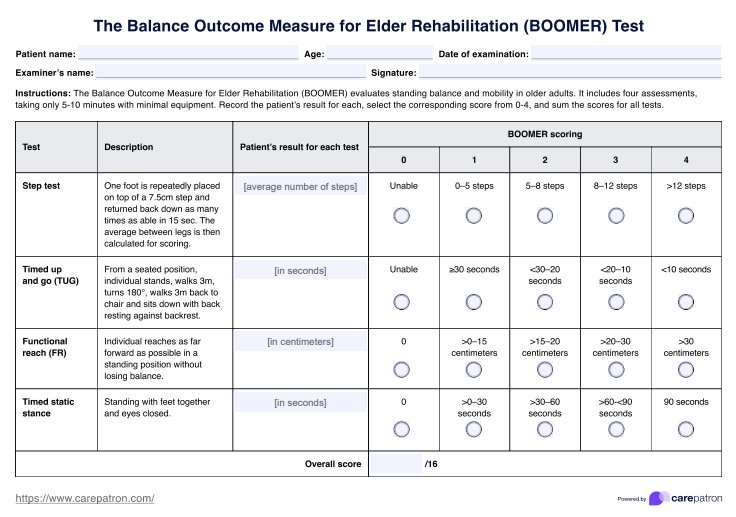The Balance Outcome Measure for Elder Rehabilitation (BOOMER) Test evaluates standing balance and functional mobility in older adults.

BOOMER Test
Use this BOOMER Test to evaluate standing balance and functional mobility in geriatric patients. Get it for free.
Use Template
BOOMER Test Template
Commonly asked questions
The BOOMER Test requires a stopwatch, a chair with armrests, a ruler or tape measure, duct tape, a cone, a yardstick, and a 7.5 cm high step.
It usually takes only 5-10 minutes, performed in one session.
EHR and practice management software
Get started for free
*No credit card required
Free
$0/usd
Unlimited clients
Telehealth
1GB of storage
Client portal text
Automated billing and online payments











